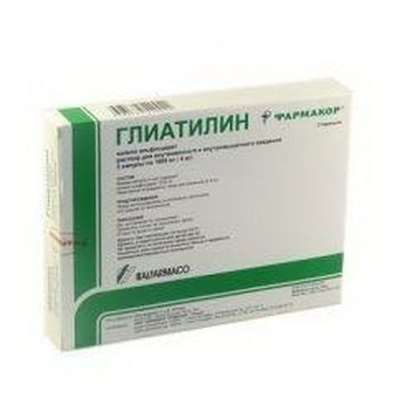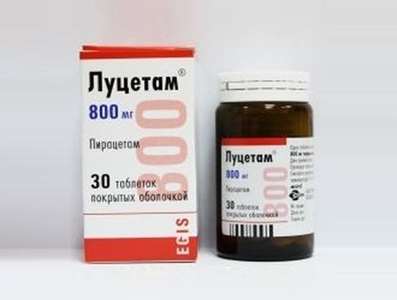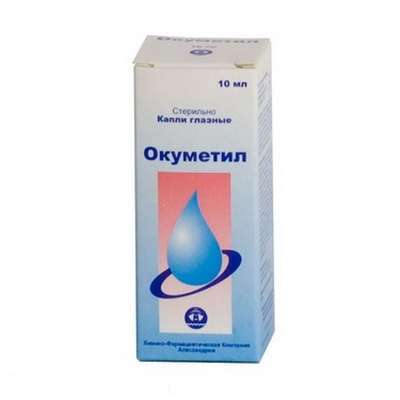Instruction for use: Aspinat Cardio
I want this, give me price
Active substance Acetylsalicylic acid
ATX code B01AC06 Acetylsalicylic acid
Pharmacological groups
Antiaggregants
NSAIDs - Salicylic acid derivatives in combinations
Nosological classification (ICD-10)
G45.9 Transient cerebral ischemic attack, unspecified
Acute cerebrovascular insufficiency, Spasm of cerebral vessels, Cerebral spastic syndrome, Spasm of the arteries of the brain, Spasm of cerebral vessels
I20.0 Unstable angina
Unstable angina, heberden disease
I21.9 Acute myocardial infarction, unspecified
Changes in the left ventricle with myocardial infarction, Changes in the left atrium with myocardial infarction, Myocardial infarction ,Myocardial infarction without Q wave, Myocardial infarction without signs of chronic heart failure, Myocardial infarction with unstable angina, Pirouette tachycardia with myocardial infarction
I22 Recurrent myocardial infarction
Atherosclerosis and the likelihood of recurrent myocardial infarction, Myocardial infarction repeated, Relapses of myocardial infarction
I26.9 Pulmonary embolism without mention of an acute pulmonary heart
Lung infarction
I64 Stroke, not specified as hemorrhage or infarction
Primary stroke, Stroke, Stroke in the course of, microstroke, stroke, The completed stroke
I74.9 Embolism and thrombosis of unspecified arteries
Arterial embolism, Arterial thrombosis, Acute arterial thromboembolism, Acute Vascular Occlusion, Acute occlusion of arteries, Acute arterial thrombosis, Acute thrombosis, Acute thrombosis of peripheral arteries, Thrombosis, Thrombosis in the extracorporeal circulation, Thrombosis of peripheral arteries, Peripheral vascular thrombosis, Shunttromboz, Embolism, Embolism of peripheral arteries, Occlusive Artery Disease
I82 Embolism and thrombosis of other veins
Recurrent venous thrombosis, Postoperative thrombosis, Venous thrombosis, Acute venous thromboembolism, Recurrent vein thrombosis, Thrombosis of veins, Thrombosis of veins of internal organs, Venous thrombosis, Deep vein thrombosis, Thrombosis of blood vessels, Vascular thrombosis, Thrombosis of veins, Deep vein thrombosis, Thromboembolic diseases, Thromboembolism of veins, Severe venous thrombosis, Embolism, Embolism of veins, Thromboembolic complications
Z100 * CLASS XXII Surgical practice
Abdominal surgery, adenomectomy, Amputation, Coronary angioplasty, Angioplasty of the carotid arteries, Antiseptic skin treatment for wounds, Antiseptic Hand, Appendectomy, atherectomy, Balloon coronary angioplasty, Vaginal hysterectomy, The coronary bypass, Interventions in the vagina and cervix, Interventions on the bladder, Intervention in the mouth, Restoration and reconstructive surgery, Hand hygiene of medical personnel, Gynecologic surgery, Gynecological intervention, Gynecological surgery, Hypovolemic shock during operations, Disinfection of purulent wounds, Disinfection of wounds edges, Diagnostic intervention, Diagnostic procedures, Cervical Diathermocoagulation, Long-surgery, Replacing the fistula catheters, Infection in orthopedic surgery, Artificial heart valve, cystectomy, Short-term outpatient surgery, Short-term operation, Short surgical procedures, Krikotireotomiya, Blood loss during surgery, Bleeding during surgery and in the postoperative period, Kuldotsentez, laser photocoagulation, laser coagulation, retinal laser coagulation, Laparoscopy, Laparoscopy in Gynecology, CSF fistula, Small gynecological operations, Small surgical procedures, Mastectomy and subsequent plastic, mediastinotomy, Microsurgical operations on the ear, Mukogingivalnye operation, suturing, Minor surgery, neurosurgical operation, Immobilization of the eyeball in ophthalmic surgery, testectomy, pancreatectomy, Perikardektomiya, The period of rehabilitation after surgery, The period of, convalescence after surgery, Percutaneous transluminal coronary angioplasty, Pleural thoracentesis, Pneumonia postoperative and posttraumatic, Preparation for surgical procedures, Preparation for surgery, Preparation of the surgeon's hands before surgery, Preparation of the colon for surgical procedures, Postoperative aspiration pneumonia in neurosurgical and thoracic surgery, Postoperative nausea, Postoperative bleeding, postoperative granuloma, postoperative shock, The early postoperative period, myocardial revascularization, Radiectomy, gastric Resection, bowel resection, uterine Resection, liver Resection, enterectomy, Resection of part of the stomach, Reocclusion of the operated vessel, Bonding tissues during surgical procedures, Removal of sutures, Condition after eye surgery, Condition after surgery, Condition after surgery in the nasal cavity, Condition after gastrectomy, Status after resection of the small intestine, Condition after tonsillectomy, Condition after removal of the duodenum, Condition after phlebectomy, Vascular surgery, Splenectomy, Sterilization of surgical instruments, Sterilization of surgical instruments, sternotomy, Dental surgery, Dental intervention in periodontal tissues, strumectomy, Tonsillectomy, Thoracic surgery, total gastrectomy, Transdermal intravascular coronary angioplasty, Transurethral resection, Turbinektomiya, Removal of a tooth, cataract surgery, Removal of cysts, tonsillectomy, Removal of fibroids, Removing the mobile primary teeth, Removing polyps, Removing broken tooth, Removal of the uterus body, Removal of sutures, Urethrotomy, Fistula likvoroprovodyaschih ways, Frontoetmoidogaymorotomiya, Surgical infection, Surgical treatment of chronic limb ulcersm, Surgery, The surgery in the anal area, The surgery on the colon, Surgical practice, The surgical procedure, Surgical interventions, Surgery on the gastrointestinal tract, Surgical procedures on the urinary tract, Surgical procedures on the urinary system, Surgical intervention of the genitourinary system, Surgical procedures on the heart, Surgical manipulation, surgery, Surgery on the veins, Surgical intervention, Vascular surgery, Surgical treatment of thrombosis, cholecystectomy, Partial gastric resection, transabdominal hysterectomy, Percutaneous transluminal coronary angioplasty, Percutaneous transluminal angioplasty, Coronary artery bypass, tooth Extirpation, Extirpation of milk teeth, pulpectomy, pulsative cardiopulmonary bypass, tooth Extraction, teeth Extraction, cataract extraction, Electrocoagulation, endourological intervention, episiotomy, Etmoidotomiya, Complications after tooth extraction
Z95.1 Presence of aortocoronary shunt graft
Coronary artery bypass grafting, Aortocoronary bypass with venous shunt
Z95.5 Presence of coronary angioplasty implant and graft
Coronary artery bypass grafting, Arteriovenous shunting, Thrombosis of arteriovenous shunt
Composition and form of release
Tablets, covered with an enteric coating.
Acetylsalicylic acid 100 mg
auxiliary substances: MCC; starch 1500; aerosil (silicon dioxide colloidal); stearic acid
Shell: ACRYL-IZ (copolymer of methacrylic acid with ethyl acrylate 1: 1, titanium dioxide, talc; triethyl citrate; silicon oxide, colloidal, sodium bicarbonate; sodium lauryl sulfate); copovidone; hydroxypropyl cellulose (Klucel)
in the package of a contiguous cell 10 units; in polymer banks 1, 2, 3, 5 or 10 packages
Description of dosage form
The tablets are round, biconvex, covered with a white or white coating with a yellowish hue, with a faint smell of acetic acid. Two layers are visible on the cross-section.
pharmachologic effect
Pharmacological action - anti-inflammatory, antipyretic, antiaggregational, analgesic.
Pharmacodynamics
The mechanism of action of acetylsalicylic acid (ASA) is irreversible inhibition of COX-1, which blocks the synthesis of thromboxane A2 and inhibits the aggregation of platelets.
It is believed that ASA has other mechanisms for suppressing platelet aggregation, which expands its use in various vascular diseases. ASA also has an anti-inflammatory, analgesic, antipyretic effect.
Pharmacokinetics
After ingestion, acetylsalicylic acid is absorbed in the upper part of the small intestine. Cmax in blood plasma is observed on average 3 hours after ingestion.
Acetylsalicylic acid undergoes partial metabolism in the liver with the formation of less active metabolites. It is excreted by the kidneys, both in unchanged form and in the form of metabolites. T1 / 2 for acetylsalicylic acid is about 15 minutes, for metabolites - about 3 hours.
Indications
prevention of acute myocardial infarction in the presence of risk factors (eg diabetes mellitus, hyperlipidemia, arterial hypertension, obesity, smoking, old age) and repeated myocardial infarction;
unstable angina;
prevention of stroke (including in patients with transient impairment of cerebral circulation);
prophylaxis of transient impairment of cerebral circulation;
prevention of thromboembolism after surgery and invasive vascular interventions (eg aorto-coronary bypass, endarterectomy of carotid arteries, arteriovenous shunting, carotid angioplasty);
prevention of deep vein thrombosis and thromboembolism of the pulmonary artery and its branches (for example, with prolonged immobilization as a result of extensive surgical intervention).
Contraindications
increased sensitivity to ASA, drug auxiliaries and other NSAIDs;
erosive and ulcerative lesions of the gastrointestinal tract, gastrointestinal bleeding;
hemorrhagic diathesis;
bronchial asthma induced by the intake of salicylates and NSAIDs, Fernan Vidal's triad (combination of bronchial asthma, recurrent nasal polyposis, paranasal sinuses and ASA intolerance);
combined use with methotrexate in a dose of 15 mg per week or more;
renal and hepatic insufficiency;
pregnancy (I and III trimester);
lactation period;
age to 18 years.
Carefully:
gout;
hyperuricemia;
presence in the anamnesis of ulcerative gastrointestinal lesions or gastrointestinal bleeding, renal and hepatic insufficiency, bronchial asthma, chronic respiratory diseases, hay fever, polyposis of nose, allergic reactions to other drugs;
II trimester of pregnancy;
combination with methotrexate in a dose of less than 15 mg per week;
deficiency of vitamin K and glucose-6-phosphate dehydrogenase.
pregnancy and lactation
The use of large doses of salicylates in the first trimester of pregnancy is associated with an increased frequency of fetal development defects (split sky, heart defects).
In the second trimester of pregnancy, salicylates can be administered only in the light of a strict assessment of the risk and benefit.
In the last trimester of pregnancy, salicylates in high doses (more than 300 mg / day) cause inhibition of labor, premature closure of the arterial duct in the fetus, increased bleeding in the mother and fetus, and the appointment immediately before childbirth can cause intracranial hemorrhages, especially in premature infants.
The appointment of salicylates in the last trimester of pregnancy is contraindicated.
Application in the period of lactation. Salicylates and their metabolites penetrate into breast milk in small amounts.
The accidental intake of salicylates during lactation is not accompanied by the development of adverse reactions in the child and does not require the cessation of breastfeeding. However, with prolonged use of the drug or its administration in a high dose, breast-feeding should be stopped immediately.
Side effects
Allergic reactions: urticaria, angioedema.
From the side of the immune system: anaphylactic reactions.
From the gastrointestinal tract (gastrointestinal tract): nausea, heartburn, vomiting, pain in the abdomen, ulcers of the mucous membrane of the stomach and duodenum, incl. perforated, gastrointestinal bleeding, increased activity of hepatic enzymes.
From the respiratory system: bronchospasm.
From the hemopoietic system: increased bleeding, anemia (rarely).
From the central nervous system (central nervous system): dizziness, noise in the ears.
Interaction
With the simultaneous use of ASA enhances the effect of the following drugs:
- Methotrexate - by reducing renal clearance and displacing it from the bond with proteins;
- heparin and indirect anticoagulants - due to disruption of platelet function and displacement of indirect anticoagulants from the connection with proteins;
- Thrombolytic and antiplatelet (ticlopidine) drugs;
- Digoxin - due to a decrease in its renal excretion;
- hypoglycemic agents (insulin and sulfonylureas) - due to hypoglycemic properties of ASA itself in high doses and displacement of sulfonylurea derivatives from binding to proteins;
- Valproic acid - due to its displacement from the bond with proteins.
Additive effect is observed with simultaneous reception of ASA with alcohol.
ASA weakens the effect of uricosuric drugs (benzbromarone) due to competitive tubular elimination of uric acid.
By enhancing the elimination of salicylates, systemic GCSs weaken their action.
Dosing and Administration
Inside, before eating, squeezed a lot of liquid.
The drug is intended for long-term use. The duration of therapy is determined by the attending physician.
Prevention for suspected acute myocardial infarction is 100-200 mg / day (the first tablet must be chewed for faster absorption).
Prevention of the first acute acute myocardial infarction in the presence of risk factors - 100 mg / day.
Prevention of repeated myocardial infarction, unstable angina, prevention of stroke and transient cerebral circulation, prevention of thromboembolic complications after surgery or invasive examinations - 100 mg / day.
Prevention of deep vein thrombosis and thromboembolism of the pulmonary artery and its branches - 100-200 mg / day.
Overdose
Symptoms of an overdose of moderate severity: nausea, vomiting, tinnitus, hearing impairment, dizziness, confusion.
Treatment: reduction of the dose of the drug.
Symptoms of a severe overdose: fever, hyperventilation, ketoacidosis, respiratory alkalosis, coma, cardiovascular and respiratory failure, severe hypoglycemia.
Treatment: immediate hospitalization in a specialized department for emergency therapy - gastric lavage, determination of acid-base balance, alkaline and forced alkaline diuresis, hemodialysis, administration of solutions, the appointment of activated charcoal, symptomatic therapy.
When carrying out alkaline diuresis, it is necessary to achieve pH values between 7.5 and 8. The forced alkaline diuresis should be performed when the concentration of salicylates in the plasma is more than 500 mg / L (3.6 mmol / L) in adults and 300 mg / L (2, 2 mmol / l) - in children.
special instructions
The drug should be used only after the appointment of a doctor.
ASA can provoke bronchospasm, as well as cause seizures of bronchial asthma and other hypersensitivity reactions. Risk factors are the presence of bronchial asthma in history, hay fever, nasal polyposis, chronic diseases of the respiratory system, as well as allergic reactions to other drugs (for example, skin reactions, pruritus, urticaria).
ASA can cause bleeding of varying severity during and after surgical interventions.
The combination of ASA with anticoagulants, thrombolytics and antiplatelet drugs is accompanied by an increased risk of bleeding.
ASA in low doses can provoke the development of gout in predisposed individuals (having a decreased excretion of uric acid).
The combination of ASA with methotrexate is accompanied by an increased incidence of side effects from the hematopoiesis.
High doses of ASA have a hypoglycemic effect, which should be borne in mind when prescribing it to patients with diabetes mellitus receiving hypoglycemic drugs.
When combined appointment of GCS and salicylates should be remembered that during treatment, the level of salicylates in the blood is reduced, and after the abolition of SCS, an overdose of salicylates is possible.
The combination of ASA with ibuprofen is not recommended, as the latter worsens the beneficial effect of Aspinat® Cardio on life expectancy.
Excess dose of ASA is associated with a risk of gastrointestinal bleeding.
Overdose is especially dangerous in elderly patients.
When a combination of ASA with alcohol is increased risk of damage to the mucosa of the gastrointestinal tract and prolong the time of bleeding.
Influence on ability to drive a car / machinery. Not visible.
storage Conditions
In a dry, the dark place at a temperature of no higher than 25 ° C.
Keep out of the reach of children.
Shelf life
2 years.
Do not use after the expiry date printed on the package.

 Cart
Cart





